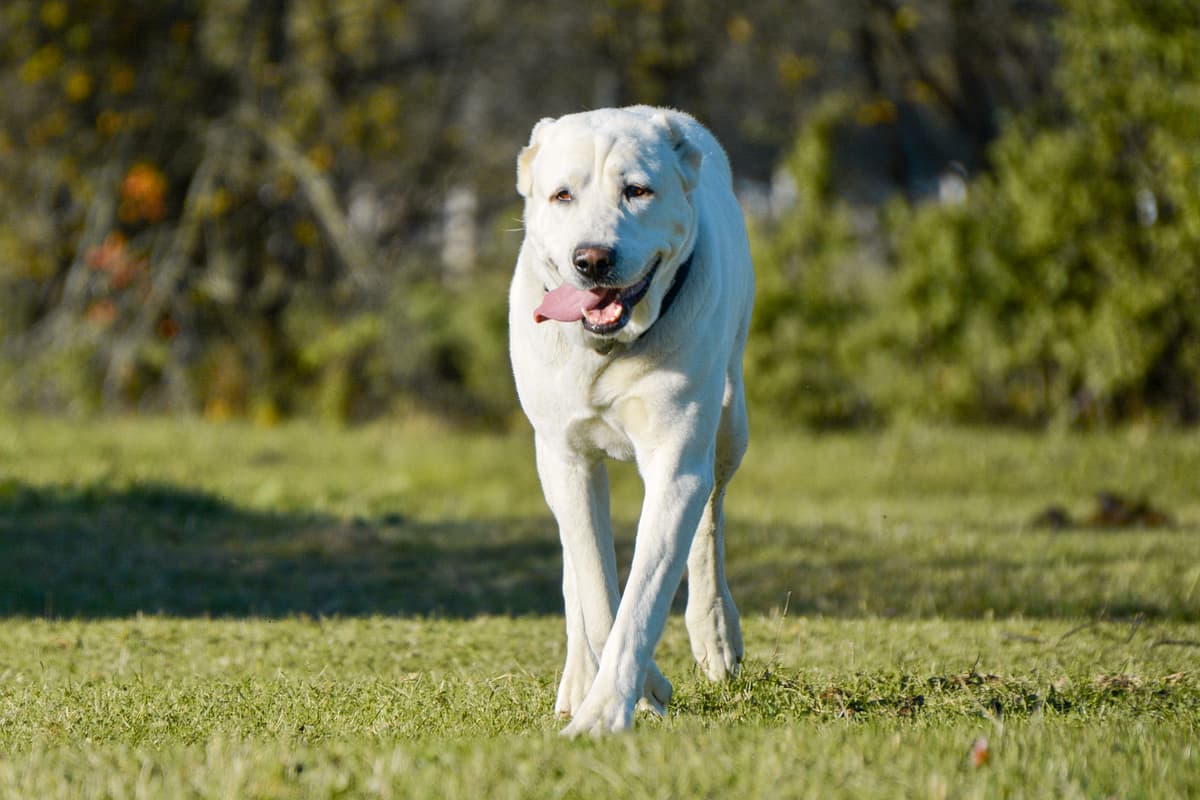Central Asian Shepherd vs English Bulldog
Discover the differences between Central Asian Shepherd and English Bulldog to make the best choice for your situation.
Try different breeds

Central Asian Shepherd
Powerful, confident, and fiercely loyal, this breed excels as a natural guardian and steadfast family protector. Calm at home yet fearless when needed, it thrives with purpose.

English Bulldog
Stocky, courageous, and affectionate, this breed charms with its wrinkled face and calm nature. Loyal and gentle, it thrives as a loving family companion.
Quick comparison
Large
50–79 kg
Dense double coat, straight
12–15 years
40–65 kg
Moderately active
Medium
23–25 kg
Short, smooth
8–10 years
18–23 kg
Low activity needs
Personality & behavior
Compare the personality traits and behavioral characteristics of both breeds.
Central Asian Shepherd
Reserved with strangers, loyal to family members
Quick learner, responds well to training
Moderate activity, enjoys regular but not intense exercise
Not highly playful, prefers purposeful activity
Can adjust to new environments with guidance
English Bulldog
Affectionate and gentle with family and children
Learns basic commands with some patience
Prefers lounging over vigorous physical activity
Enjoys play but tires fairly quickly
Adjusts well to most living environments
Care needs
Exercise, grooming, and daily care requirements
Central Asian Shepherd
Hip dysplasia, elbow dysplasia
English Bulldog
Brachycephalic syndrome, skin fold infections
Suitability
How well each breed fits different living situations and families
Central Asian Shepherd
Challenging for beginners
Requires experienced handling and training due to independence and size
Not apartment-suited
Needs ample space and outdoor access to be comfortable
Moderately suitable
Enjoys activity but prefers purposeful work over constant play
Watchful but wary
Protective instincts may be too strong for homes with small children
Cautious introduction needed
May show dominance or territorial behavior with other animals
Poor fit
Dislikes isolation and may develop behavioral issues if left alone often
English Bulldog
Good option
Easygoing, low-maintenance nature suits owners with limited dog experience
Excellent fit
Moderate exercise needs and calm demeanor work well in small living spaces
Not ideal
Low stamina and breathing issues make them unsuited for high-activity lifestyles
Very suitable
Gentle, patient, and tolerant with young children when properly socialized
Usually compatible
Generally sociable but may need guidance with other pets, especially dogs
Not recommended
They struggle with long periods alone and are prone to separation anxiety
Breed strengths
What each breed excels at and their best qualities
Central Asian Shepherd
- Protective instincts make excellent livestock guardians
- Highly resilient to harsh weather conditions
- Loyal and devoted to their families
- Low grooming needs due to dense coat
- Independent problem-solving abilities
English Bulldog
- Affectionate with family members
- Generally good with children
- Low exercise requirements
- Minimal grooming needs
- Adaptable to apartment living
Challenges & considerations
Potential challenges and considerations for each breed
Central Asian Shepherd
- Can be wary or aloof with strangers
- Requires experienced handler for training
- Strong territorial and protective drive
- Needs substantial space and secure fencing
- May show aggression toward unfamiliar dogs
English Bulldog
- Prone to respiratory problems
- High risk of overheating
- Susceptible to skin infections
- Can be stubborn during training
- Tends to drool frequently
Ready to choose your perfect breed?
Learn more about each breed or compare other breeds to find the perfect match for your lifestyle.
Discover more helpful tools
Make use of our other free tools to get the most out of your pet experience
